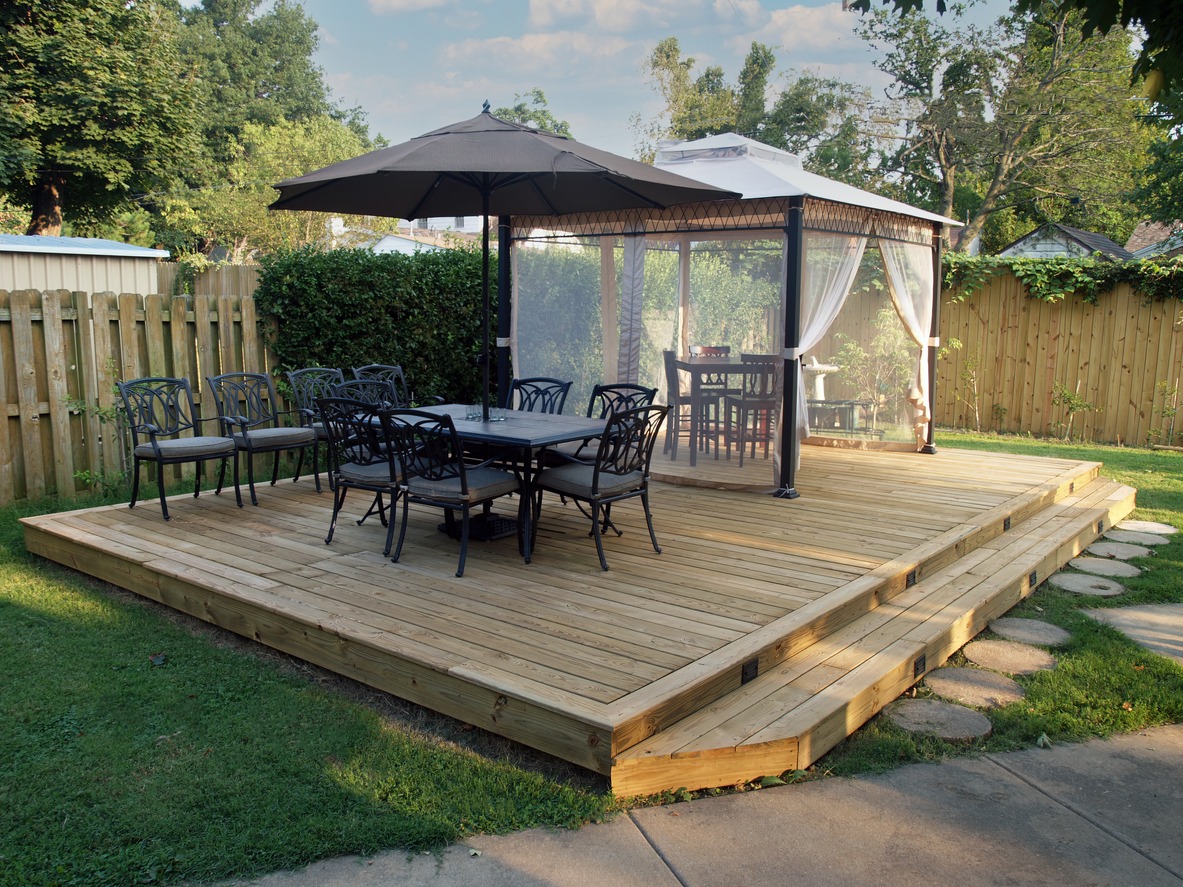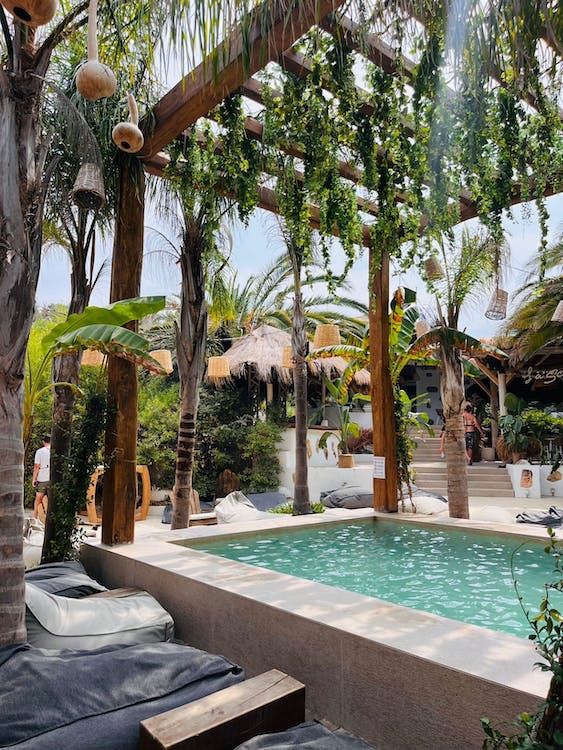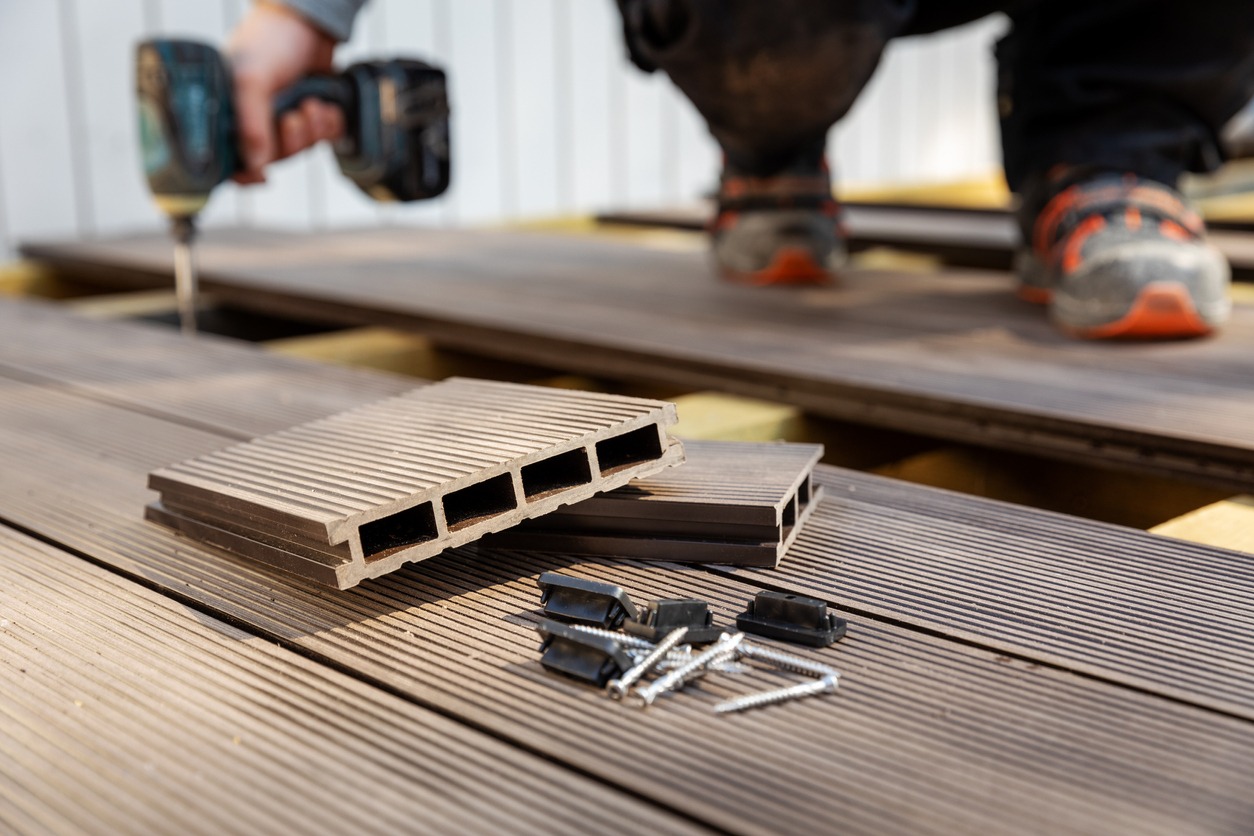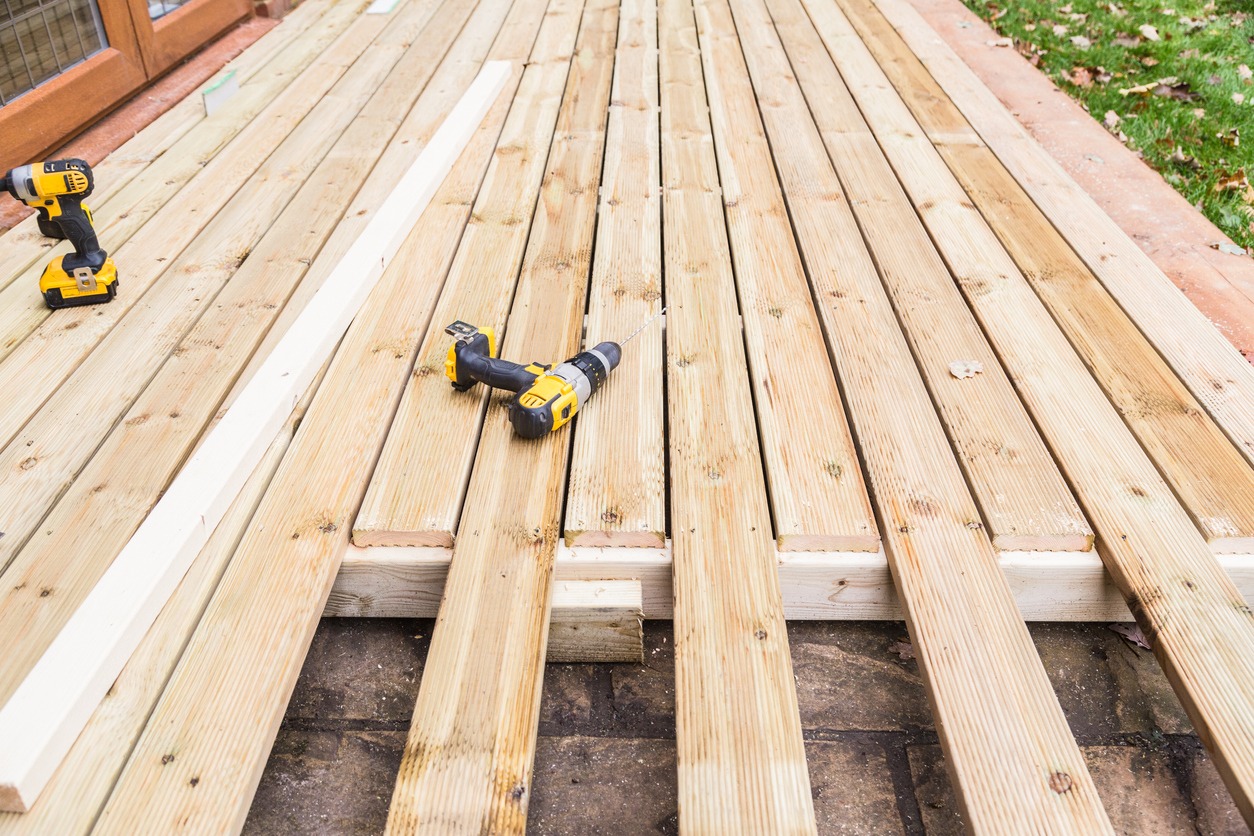Advancements in decking materials and design are transforming outdoor living spaces, turning simple decks into inventive extensions of the home. As decks become focal points for relaxation and entertainment, homeowners and designers are exploring new features that elevate both aesthetics and functionality. The integration of eco-friendly materials, for instance, demonstrates a growing commitment to sustainability without compromising on strength or style.
Efficient use of space and striking designs are now possible with innovations like multi-level layouts and curved railings that provide an illusion of more space and a distinct visual appeal. This customization extends to the integration of smart lighting and technology that not only ensures safety but also enhances the ambience of an outdoor deck. These technological improvements are matched by a shift towards bold and vibrant colors, which add character and reflect personal style.
In addition, there is a trend toward mixed materials which allow for unique combinations, offering durability and ease of maintenance while also catering to diverse design preferences. Features such as built-in seating and wide plank decking are changing the way decks are viewed and utilized. These modern decks are more than just places to stand; they are compelling environments for living and engaging with the outdoors.
Design Innovations in Decking
Innovation in decking combines aesthetics and functionality to enhance modern outdoor living spaces. With a focus on eco-friendly materials and smart technology, deck designs have evolved to include a variety of elements that cater to diverse preferences and lifestyles.
Modern Deck Designs
Modern deck designs incorporate clean lines and neutral color palettes with occasional pops of vibrant colors to create visually appealing spaces. These designs often feature a mix of traditional wood textures with contemporary materials like composites, providing both beauty and durability. Modern deck designs also optimize space by including built-in seating and storage options that blend seamlessly with the overall design, maintaining a streamlined look.
Pergolas and Shade Structures
Pergolas are a popular feature in decking, offering both aesthetic appeal and functional shade. These structures can be crafted to match the deck’s design, employing materials like aluminum or natural wood to harmonize with the deck’s style. Pergolas may include retractable canopies or be adorned with climbing plants, providing a customizable balance of light and shade.
Deck Lighting Options
Deck lighting has transformed with the introduction of smart lighting and recessed lighting options, allowing homeowners to control the brightness and color of their outdoor space. Lighting can be strategically placed along the deck’s edges or within the flooring to ensure safety and create ambiance. Dimmable and programmable features enable the adjustment of lighting for different occasions, enhancing the deck’s versatility.
Material Advances
Advancements in deck materials have significantly broadened the choices available to homeowners and builders. Today’s market includes a diverse range of options that cater to sustainability, durability, and aesthetic preferences.
Composite and Eco-Friendly Materials
Composite decking is a prominent choice for its eco-friendly attributes, as it often incorporates recycled plastic and reclaimed wood fibers. These materials are melded into boards that resist rot, warping, and insect damage, making composite decking a low-maintenance option. Manufacturers like TimberTech® offer lines such as the PRO® and EDGE® collections, which provide a variety of colors and textures.
- Sustainability: Many composite materials are made from recycled content.
- Maintenance: The need for staining, sealing, or painting is minimal.
- Durability: Resistant to many of the issues that plague natural wood.
Eco-friendly materials also include new options like bamboo decking. Bamboo is a fast-growing grass that provides a strong, dense board, and is considered a highly renewable resource due to its rapid regrowth rate.
Natural Wood and Stone Options
While composite materials rise in popularity, traditional natural wood remains a sought-after choice for its beauty and timeless appeal. Choices such as cedar and redwood resist decay naturally and can be sustainably sourced. For those seeking reclaimed options, salvaged wood offers unique character and reduces the need for new lumber.
Stone decking, although less common, presents a durable and distinctive option. Using natural stone or pavers can create a deck with a unique texture and color variation that complements a variety of outdoor designs.
- Natural Aesthetics: The look and feel of natural wood and stone are often unrivaled.
- Environmental Impact: Sustainably sourced wood and locally quarried stone minimize environmental footprint.
- Longevity: Both materials, if properly maintained, can last for decades.
Integrated Deck Features
Modern deck designs integrate functionality with style, creating spaces that are as useful as they are visually appealing. From seating that doubles as storage to complete culinary setups, integrated features allow homeowners to maximize their outdoor living areas.
Built-In Seating and Storage
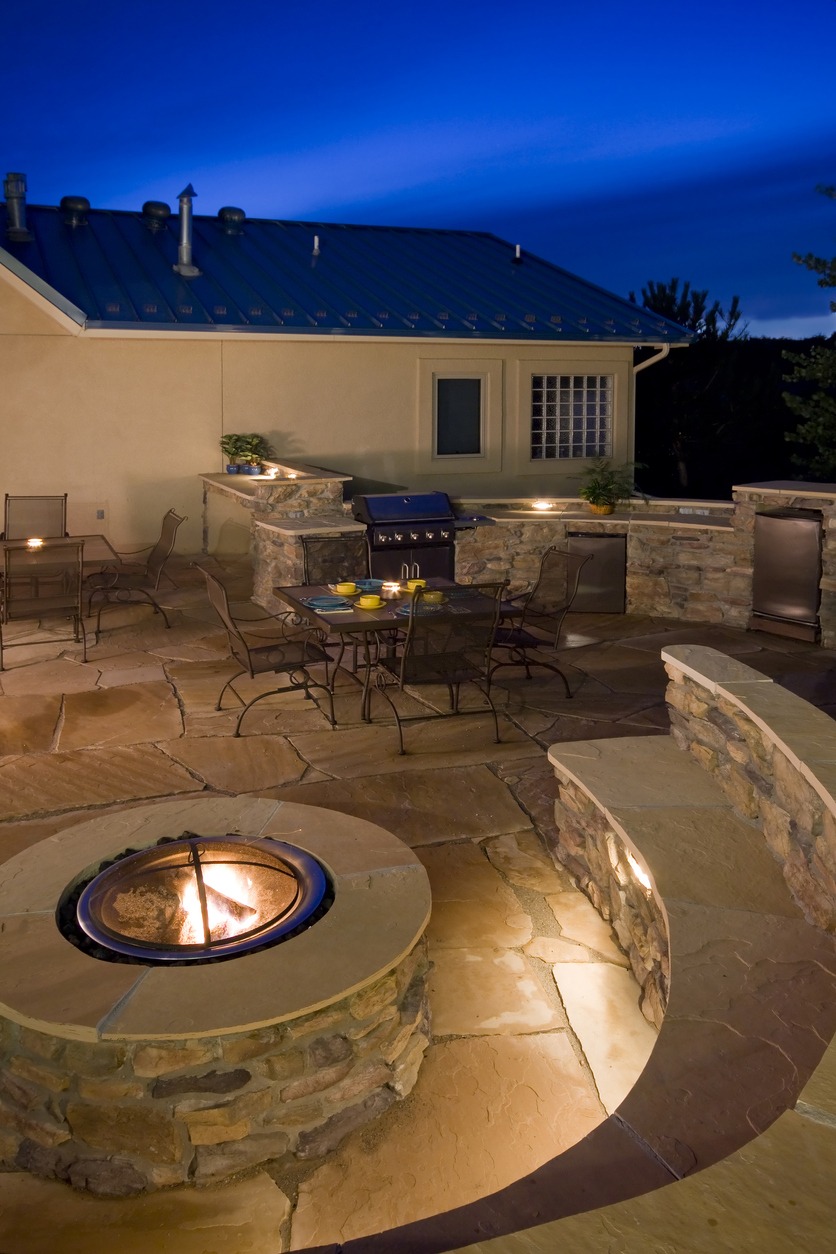
Built-in benches offer a seamless look while providing ample seating for guests. Utilizing the space under the seats, these benches can also include hidden storage compartments. They are perfect for stowing away outdoor cushions, gardening tools, and other deck essentials. Incorporating planters into the seating design can bring a touch of green to the deck and create a more inviting atmosphere.
Advantages:
- Space-saving design.
- Clutter-free outdoor living space.
- Enhanced visual appeal with customized materials and finishes.
Indulge in ultimate comfort with exquisite an outdoor furniture sofa alongside built-in seating and storage. This helps transform your outdoor space into a luxurious retreat and functional entertainment area for guests and visitors.
Outdoor Kitchens and Fire Pits
An outdoor kitchen elevates a deck to a new level of entertainment. It can include a built-in grill, countertops, storage, and even a mini-fridge, enabling homeowners to prepare and serve meals without leaving the company of their guests. Fire pits integrated into a deck design not only provide warmth but also become a natural gathering spot. Whether it’s for cooking or just relaxing, these features create a versatile space for all to enjoy.
- Outdoor Kitchen Components:
- Durable countertops for meal prep.
- Storage for cooking tools and essentials.
- Appliances and utilities like grills and sinks.
- Fire Pit Elements:
- Safe and suitable materials for high temperatures.
- Proximity to seating for comfort and accessibility.
- Consideration for local ordinances and safety standards.
Enhancing Outdoor Experience
When creating a deck space, the emphasis is on fostering an environment that caters to relaxation and social interaction, with the right blend of greenery and functional design elements.
Greenery and Decor
Incorporating greenery into a deck design elevates both the aesthetic appeal and the sense of tranquility. Strategically placed potted plants can create a natural border, while climbing plants on trellises add vertical interest and a sense of enclosure. Decks can be further beautified and softened with a variety of flowers, adding color and fragrance. The use of decor such as durable outdoor rugs complements the natural elements, making the transition from indoors to outdoors seamless and inviting.
Outdoor Dining and Lounging Areas
Every deck benefits from well-defined dining and lounging areas. A dining area might feature a large table and comfortable seating to accommodate meals. Materials used here should balance style with functionality to withstand the elements. For lounging, modular furniture offers versatility, allowing homeowners to easily rearrange setups for different events. Ample seating options, such as sofas and sectionals, encourage relaxation and foster an inviting setting for guests to gather.
Customization and Personalization
Creating a deck that reflects personal style and is adapted to specific environmental conditions can significantly enhance the enjoyment and functionality of outdoor spaces.
Color and Decor Accents
Selecting a color scheme for a deck is pivotal in personalizing the space. Homeowners can infuse individuality by choosing colors that complement the exterior of the home or reflect the natural surroundings. For instance, a coastal home might incorporate blues and sandy hues, while a forested area might inspire greens and browns. Adding throw pillows and outdoor rugs can introduce pops of color and provide comfort, creating an inviting atmosphere.
- Trendy color options:
- Earth tones for a natural look
- Vibrant colors for a lively ambiance
- Neutral palettes for timeless elegance
When considering deck ideas, homeowners might explore curved decks for a unique aesthetic that breaks the mold of traditional straight lines. These curves can play into the overall color theme and serve to guide the eye, providing unobstructed views and a smooth transition throughout the backyard.
Deck Customization by Climate
The climate in which a deck is constructed is an essential factor for customization. Materials and design elements must be chosen for their ability to withstand local weather conditions. For instance, in areas with high moisture, composite decking can be an excellent choice due to its resistance to rotting and warping. In contrast, harder woods like teak or ipe may be better in sunny and hot climates for their durability and resistance to sun damage.
- Climate adaptation strategies:
- Use of UV-resistant materials in sunny areas
- Incorporation of open structures for airflow in hot climates
- Installation of heaters or fire pits in cooler regions for year-round use
By considering these essential customization aspects, a deck becomes more than just an addition to a home; it transforms into a personalized retreat, tailored to both the homeowner’s taste and the climate’s demands.
Functional Aspects of Deck Building
When constructing a deck, functionality is as essential as aesthetics. It involves complying with safety standards and ensuring structural integrity through careful consideration of materials and construction techniques.
Safety and Building Codes
Adherence to building codes is paramount in deck construction. These regulations set the minimum standards for safety, specifying requirements from the height of the railings to the spacing of balusters. For instance, railings typically must be at least 36 inches high, and the space between balusters should not allow a 4-inch sphere to pass through, ensuring that children cannot fall through.
- Stairs and Railings: Every set of stairs with more than four risers must have a handrail, and open sides of the stairs require guardrails.
- Deck Drainage System: A proper drainage system is critical for safety to prevent standing water which can lead to slippery surfaces and structural damage over time.
Structural Considerations
A deck’s framing serves as the skeleton to which all other components are attached, making it one of the most critical aspects of deck construction.
- Footings: Footings must be set below the frost line to prevent shifting during freeze and thaw cycles. The exact depth is specified by local building codes.
- Material & Construction: Using pressure-treated lumber for framing can prevent rot and insect damage. Additionally, metal connectors and fasteners should be corrosion-resistant to enhance longevity.
Deck construction takes precise planning and attention to detail, with an emphasis on the functional components such as stairs and footings, which are essential for both safety and the long-term durability of the deck.
Innovative Lighting and Aesthetics
Innovative decking features offer both function and flair, with smart lighting and sleek railing designs setting modern decks apart.
Ambient and Smart Lighting Solutions
Ambient lighting transforms a deck into a welcoming and comfortable outdoor space after sunset. Products like solar-powered lights and LED strip lights are at the forefront of eco-friendly and energy-efficient lighting solutions. They provide gentle illumination perfect for setting a relaxing atmosphere. For example, solar-powered lights, which come in various designs, can be strategically placed around the deck perimeter or built into stair risers for improved visibility without overwhelming the area with bright light.
Smart lighting takes convenience to the next level. Homeowners can control such lighting systems via smartphone apps or voice commands. These systems can include features such as dimming, color-changing capabilities, and timers to ensure the deck is lit according to the occasion and time of day.
- Solar-powered lights: Eco-friendly, no wiring required, charges during the day.
- LED strip lights: Flexible, energy-efficient, can be installed under railings or steps.
Unobtrusive and Aesthetic Railing Options
Deck railings are crucial for safety, but they also play an important role in the aesthetic appeal of outdoor spaces. Innovative railings seamlessly integrate with lighting to offer both beauty and practicality. Glass railings are a popular choice for their clean lines and unobstructed views, providing a sense of openness yet still defining the deck’s boundaries. When combined with discreet lighting, they can create a magical, floating effect at night.
Another approach is the integration of low-profile LED strip lights along railings, offering both a modern look and functional pathway lighting. This type of lighting preserves the night sky and avoids light pollution, making it a considerate addition to residential areas.
- Glass railing options: Enhance view, modern appeal, can include LED channels.
- LED integrated railings: Sleek design, provide navigation lighting without glare.
Deck Extensions and Adaptability
Deck extensions offer homeowners the opportunity to enhance their outdoor living spaces by introducing multi-level designs, rooftop access, and strategic seating arrangements that optimize views and comfort.
Multi-Level and Rooftop Decks
Multi-level decks provide a dynamic aesthetic and functional diversification in outdoor living spaces. A homeowner might incorporate a multi-level structure to follow the natural terrain of their property, creating distinct areas for dining, lounging, or gardening. Each level can have its own purpose and atmosphere, which is dictated by the choice in furnishings and accessories. Rooftop decks are an innovative solution for urban areas where ground space is limited. A rooftop deck offers a private retreat with potential panoramic views. It is crucial to work with a skilled deck builder who can ensure structural integrity and navigate building codes.
- Features of Multi-Level Decks:
- Distinct activity zones
- Seamless flow between home and garden
- Enhanced privacy with staggered levels
- Considerations for Rooftop Decks:
- Access and safety measures
- Weatherproofing and material durability
- Canopy or shade structures to offer protection from the elements
Sunken Seating and Elevated Deck Views
Sunken seating areas, also known as “conversation pits,” are making a comeback with a modern twist, incorporated into deck designs. These spaces can create an intimate gathering area that allows for unobstructed views, especially when paired with an elevated deck. Elevating a deck not only enhances the views but also helps in delineating spaces and can provide additional storage or sheltered areas underneath.
- Advantages of Sunken Seating:
- Fosters a cozy environment for socializing
- Integrates seamlessly with the overall deck design
- Benefits of Elevated Decks:
- Maximizes available outdoor space
- Offers an expansive vantage point
When designing any extension, such as a multi-level deck or one that features sunken seating, the key is to ensure that the result is a cohesive extension of the home that offers adaptability, safety, and comfort.
Sustainability and Environmental Considerations
When constructing or upgrading decks, homeowners and builders increasingly prioritize sustainable practices. These practices aim to reduce environmental impact while still achieving a space that embodies tranquility and organic aesthetics.
Recycling and Use of Sustainable Materials
Recycled Plastic: Recycled plastic lumber emerges as a frontrunner in sustainable decking materials. It’s appreciated for its low maintenance and resistance to weathering. Most notably, its use prevents plastic waste from ending up in landfills and oceans. Decking made from recycled plastic often maintains an organic feel similar to traditional wood but without the associated environmental depletion.
Eco-Friendly Materials: Another stride in sustainable decking involves the selection of eco-friendly materials. These materials are produced and harvested responsibly to ensure harmony with the ecosystem. Options include sustainably sourced woods, composites, and materials that require less energy and resources to manufacture. They not only offer durability but also the possibility to be recycled at the end of their life cycle.
| Material Type | Benefits | Environmental Consideration
|
| Recycled Plastic | Low maintenance, durable | Reduces plastic waste, no need for harmful treatments |
| Composites | Long-lasting, low upkeep | Often made from recycled wood and plastic fibers |
| Sustainably-sourced Wood | Natural look and feel | Harvested with minimal environmental impact |
The selection of decking materials is critical for ensuring longevity and sustainability. By choosing recycled and eco-friendly options, individuals construct decks that contribute to a greener future while offering spaces of serenity and tranquility for their homes.
Important Considerations When Enhancing Outdoor Living Spaces
Here are some important considerations to keep in mind:
- Purpose and Functionality
Determine how you intend to use the deck space. Whether it’s for hosting gatherings, relaxation, outdoor cooking, or a combination of activities, ensure that the features you incorporate align with your intended purposes.
- Local Building Codes and Regulations
Before starting any construction or adding features to your deck, check local building codes and regulations. Ensure that your plans comply with safety standards and obtain any necessary permits.
- Material Selection
Choose durable and weather-resistant materials for your deck that can withstand outdoor elements. Options include wood (such as cedar, redwood, or tropical hardwoods), composite decking, or PVC decking.
- Deck Layout and Design
Plan the layout and design of your deck to maximize space and functionality. Consider traffic flow, seating areas, dining spaces, and integration with existing landscape features.
- Maintenance Requirements
Factor in the maintenance requirements of your chosen deck features and materials. Regular cleaning, sealing, and inspections are essential to preserve the integrity and longevity of your outdoor living space.
- Budget
Establish a budget for your deck enhancement project and prioritize features based on your budget constraints and preferences. Balance cost-effectiveness and the desired aesthetic and functional enhancements.
Final Thoughts
Enhancing outdoor living spaces with innovative deck features is more than just an upgrade to your home’s aesthetics; it’s about creating a personal haven where comfort meets functionality. By integrating elements like multi-level designs, built-in seating, and ambient lighting, your deck transforms into an inviting extension of your indoor living space. The addition of features like outdoor kitchens and fire pits cater to entertaining and relaxation, allowing you to enjoy the outdoors in new and exciting ways. Whether you’re looking for a quiet reading nook or a vibrant space for social gatherings, these innovative deck features provide the flexibility and charm to accommodate any lifestyle.
Remember, the goal is to create an outdoor space that reflects your personal style and meets your functional needs. The versatility of modern decking materials, combined with creative design elements, opens up a world of possibilities for tailoring your outdoor area. From eco-friendly composite materials to the classic elegance of natural wood, the choice of materials can significantly influence the ambiance of your deck. By considering these innovative features, you’re not just building a deck; you’re crafting an experience, an oasis in the comfort of your backyard that blurs the lines between indoors and out.

